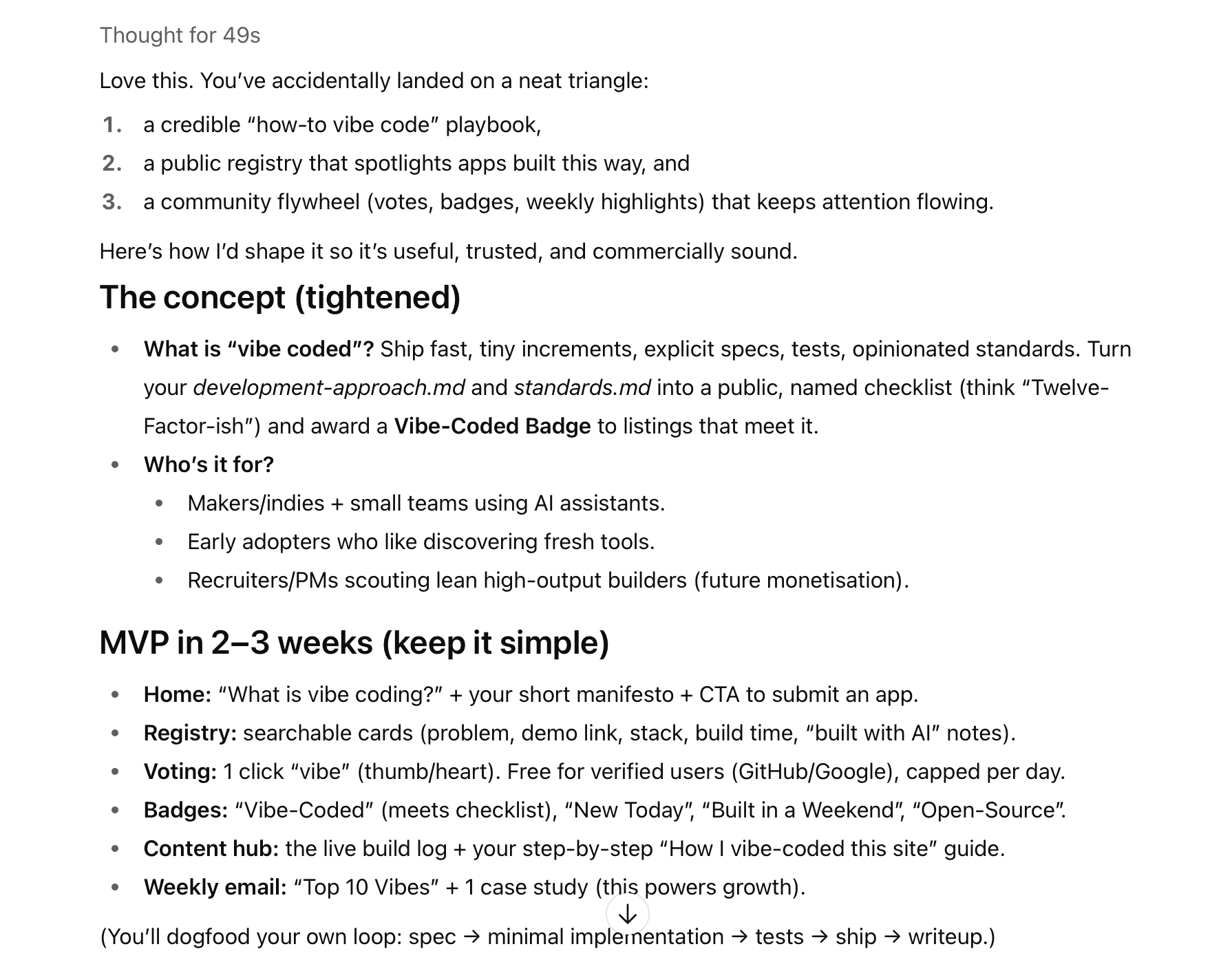Play 1: Nail the Product Vision
What you'll learn
- 1Use AI as a thinking partner to craft a clear product vision
- 2Structure a north‑star document that guides all decisions
- 3Translate vision into guardrails, scope and success signals
I've learned the hard way that if you don't have a clear product vision, the AI will happily build you a beautiful, functional mess that solves the wrong problem. It will follow your instructions to the letter, even if those instructions lead you off a cliff.
For UpvoteVibe, I spent an hour defining the product strategy before I even thought about the tech stack. That one-hour investment saved me weeks of wasted effort. This document became the filter for every feature, every design choice, and every AI prompt.
This play isn't about writing a stuffy corporate mission statement. It's about creating a practical, actionable document that keeps you and your AI focused on the same goal.
The Play-by-Play: From Idea to Vision
I treat the AI as a thinking partner in this phase. It's great at helping you articulate ideas, stress-test assumptions, and see around corners.
Step 1: The Brainstorm (20 mins)
Start with your core insight. What's the problem you're trying to solve? Who are you solving it for?
I started with a rough idea: "Makers using AI need a way to get signal, and explorers need a way to find credible AI-built projects."
I fed this to ChatGPT and asked it to help me unpack it. We went back and forth, refining the definitions:
- What does "vibe-coded" actually mean? We landed on: "AI does the bulk of implementation; a human steers by intent and feel."
- Who are the users? We defined two key personas: Makers who need attention and Explorers who need credible examples.
- What's their core problem? We identified it as: "Discovery is noisy; ‘AI-built’ ranges from brilliant to brittle."
Don't aim for perfection here. The goal is to get the raw material down. The AI is your sparring partner. Use it to challenge your assumptions.
Step 2: The Draft (20 mins)
Now, structure your brainstorm into a coherent vision document. This is where you translate the abstract ideas into concrete rules. I used the structure from the actual product-vision.md file in the specs directory.
Here are the key sections I defined for UpvoteVibe:
- Positioning: A one-sentence summary. For UpvoteVibe: "...the showcase and signal for AI-executed apps."
- Core Mechanics: The essential features. For UpvoteVibe: Listings, Vibes, and a weekly Top Vibes highlight.
- Brand Principles: The values that guide your decisions. For UpvoteVibe: "Low friction, high honesty," and "Teach without gatekeeping."
- Non-Goals: What you are explicitly not building. For UpvoteVibe: "No comments, complex reputation systems, or audits of code quality." This is the most important section for preventing scope creep.
- Success Measures: How you'll know if it's working. For UpvoteVibe: "Vibrant supply: steady inflow of genuine vibe-coded submissions."
Step 3: The Litmus Test (5 mins)
Once you have a draft, ask the AI to play devil's advocate. This is the single most valuable thing you can do.
My prompt was:
"Here's my product vision for UpvoteVibe. What are the three biggest risks? How could this fail? What are the weakest parts of this strategy?"
The AI's feedback was invaluable. It highlighted the risk of "low-effort flood" and "vote gaming," which led me to build in the concepts of verified accounts and a small listing fee (as a future option) from day one.

Your Vision Document Is Your AI's Constitution
This document is now the ultimate constraint for every prompt you write. Every feature you build must align with it.
- When you ask the AI to build a UI component, you can say: "Build this according to our 'signal over spectacle' principle."
- When you're defining a new feature, you check it against your Non-Goals.
- When you're tempted to add something new, you ask: "Does this serve the Makers or the Explorers?"
A clear vision doesn't limit you; it focuses you. It's the foundation of clean, effective vibe-coding.
Now that you have a vision, it's time to translate that into specific user journeys.